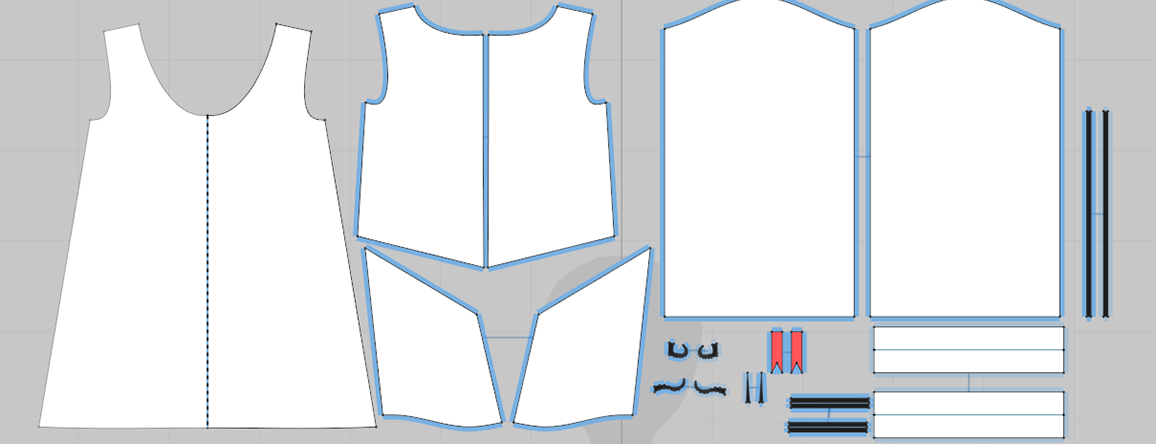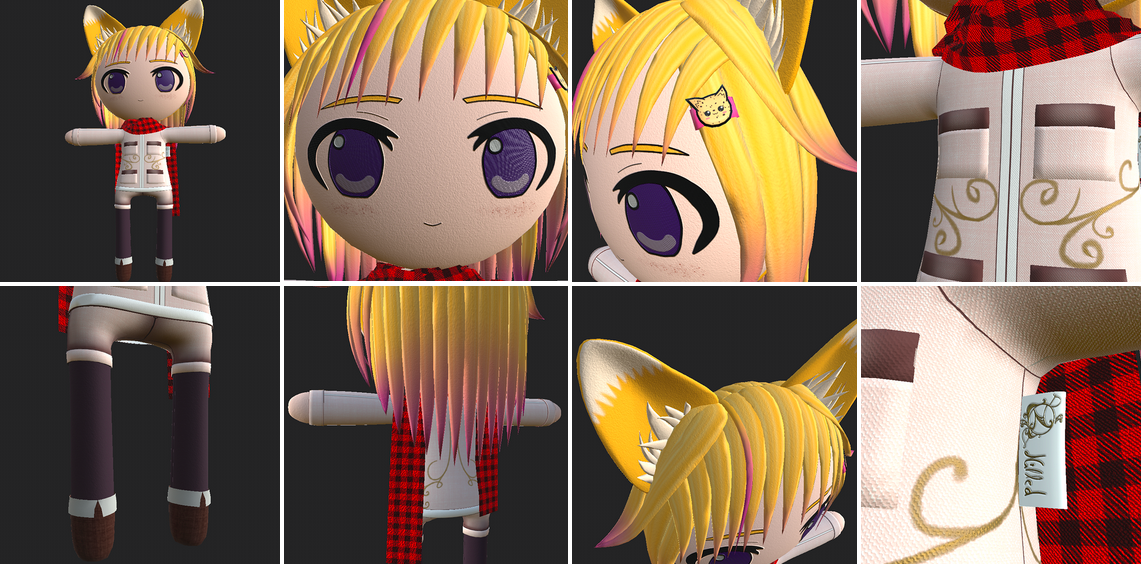When the COVID-19 pandemic set in and drove more social interaction online, virtual reality (VR) platforms, like VRchat or SecondLife, exploded in popularity. These virtual environments allow users to make friends, play games, and participate in a virtual economy. For Claire Lumen (BS ‘20, Apparel Design), this technology provides more than just a social outlet. As a student, VR shaped her academic focus and played a pivotal role in her journey as a trans woman. Now in her professional life, VR continues to shape how Lumen applies her apparel design skills to the virtual world.

Tell us a little about what you do as an apparel designer for reality/gaming environments.
My work is essentially 3D modeling commissions for the use of virtual reality socializing. Clients hire me to create entire functional avatars to be worn in a VR environment, almost universally VRchat. Often, clients already have a creative direction they want me to make tangible for them. Sometimes clients want my input on the creative direction of the avatar, which I thoroughly enjoy. A future goal I’m working towards is starting my own business around making and managing my own world in VRchat that links with a web store to sell whole lines of avatar garments made to fit a list of popular base models.
How did you use VR as a student and when did you realize it could be a career path?
I’ve always been interested in VR, but for a long time, I didn’t have the resources to explore it nor enough reason to use it to justify the costs. During my sophomore year at the College of Design, I discovered a burgeoning social platform called VRchat, which allows users to upload anything they can create to the platform and use it to make friends, play games, and explore creations. My desire to participate in VRchat was the push that got me to invest in the technology. The unique elements of socializing in VR captivated me, specifically the ability to present however you’d like to others as well as yourself. It helped me discover that I was very unhappy with my physical appearance outside of VR and was far happier living my life as a woman.
Designing for this technology began dominating the focus of my academic life. The apparel program taught us a bit of Optitex, a fashion design software, and I was interested in possibly applying this knowledge to make my own outfits for my VRchat avatar. I started exploring with Clo3D and Blender, other design softwares, a few months after really getting into VR. Eventually, I offered to make stuff for friends to get practice and then started offering my services as a freelance designer.
Your senior project heavily focused on the intersection between virtual reality and fashion. How has that project and the research you conducted for it impacted your career so far?
My senior project was one hell of an undertaking that I poured my entire soul into for over a year. I definitely set the bar way too high but I’m still proud of what I managed to achieve with it, which was a fully operational (albeit very buggy) body garment that could track the position of the wearers’ limbs.
My project taught me a great deal, and I think it was an invaluable experience. I didn’t know the first thing about electrical engineering before starting it. I researched everything I needed to myself and got involved with two different labs, the Wearable Technology Lab in McNeal Hall and the Illusioneering Lab in Keller Hall, to help me. Being solely responsible for the huge undertaking taught me loads about electrical engineering and software development of course, but also time management, division of labor, communication across different specialists, and more.
What’s the most exciting thing about your job?
There are a few super exciting parts of what I do. Number one is being able to see someone wear what you make them and be happy with it in a way that is so personal. I know that’s not unique to making apparel, but the context of knowing that a person can look like anything in VRchat, and knowing you helped them find something they find comfortable is a very satisfying feeling. I also love creating really fantastical garments that simply cannot exist in the real world.
What advice would you give current design students?
Working on things that matter dearly to you is where I believe you will flourish as a designer. It is the passion for what I do that helps me through the toughest parts of the work and helps me see it through to the end. By making a monotonous task a chance to learn something new I can make it fun for myself even if it is long or hard. What you love to work on might not always match academia's timeline but if it’s what makes you happy then it’s worth trying.
Making Space for Emotion: Gardens of Pain and Joy is not your average landscape architecture design studio. Taught by Professor Rebecca Krinke, this innovative course teaches students how to intentionally design spaces that acknowledge feelings and share them.
An interdisciplinary partnership between College of Design faculty, the Goldstein Museum of Design (GMD), and Episcopal Homes Senior Housing and Care Services is developing virtual reality (VR) technology to expand access to exhibitions and other public events for low-income elder residents through the creation of a “VR Book Club.”
Sarah Klecker (BS ’17, Apparel Design) is putting her design degree to work creating functional apparel for athletes of all kinds.








